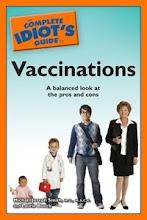I recently heard about a local 8-year-old girl with leukemia whose parents are looking for a bone marrow donor match for her. Because the girl, Natalie, is Asian, a match (i.e., someone whose cells are similar enough to the girl's cells for her immune system to accept the transplant) is most likely with an Asian donor.
There is an
ongoing shortage of ethnic minority donors of bone marrow and stem cells for blood cancer patients (stem cells are extracted from the donor's blood in an outpatient procedure). As a result, Caucasian patients are about twice as likely to find a donor match as minority patients.
I looked at the site for the girl,
www.hopefornatalie.com, and looked at a related bone marrow donation site,
www.dkmsamericas.org, then tweeted the information to spread the word, because you never know who might be able to help. And perhaps Natalie's case will encourage more people to register as potential bone marrow donors so that patients with blood cancer will have a larger group of donors to search within the
National Marrow Donor Program. Donating bone marrow, if you're the right match for a patient, is
relatively simple and painless.
To spread the word and find a donor, Natalie's parents created a web page, Facebook page, and Twitter account, using social media to its fullest extent; I heard about Natalie on a Yahoo listserve. Natalie's website includes links to volunteer, register, and make donations, and a media contact number.
Thinking about Natalie's case, however, I am haunted by a number of questions. First of all, I wonder about the families who need bone marrow or blood donors for their ill children but who don't have the tech savvy, access, or language skills to look for much-needed donors through social media.
These families can't cast a wide net looking for donors as Natalie's family has. They are less likely than Natalie's family to find a donor who can save their child. On the other hand, these families do benefit from the additional donors in the national registry who sign up when they hear about children such as Natalie. But to what degree does the surge of new registrants created by cases such as Natalie's mitigate this digital divide?
A while ago, when Twitter was quite new, I stopped to chat with the father of my daughter's classmate at pick-up time. He worked at Twitter, and I asked him what exactly Twitter was supposed to be used for - griping about your day? planning a night out with friends?
Now I know that Twitter is not just a tech toy. It played such a big role in documenting the Iranian election in 2009, for example, that
the State Department asked Twitter to change its maintenance schedule in order to keep Twitter online during the protests. Twitter, Facebook, blogs, and other online media are, in fact, extremely powerful for spreading the word about any number of different causes -- political, medical, or personal. Powerful, that is, for people who have access to the technology.



